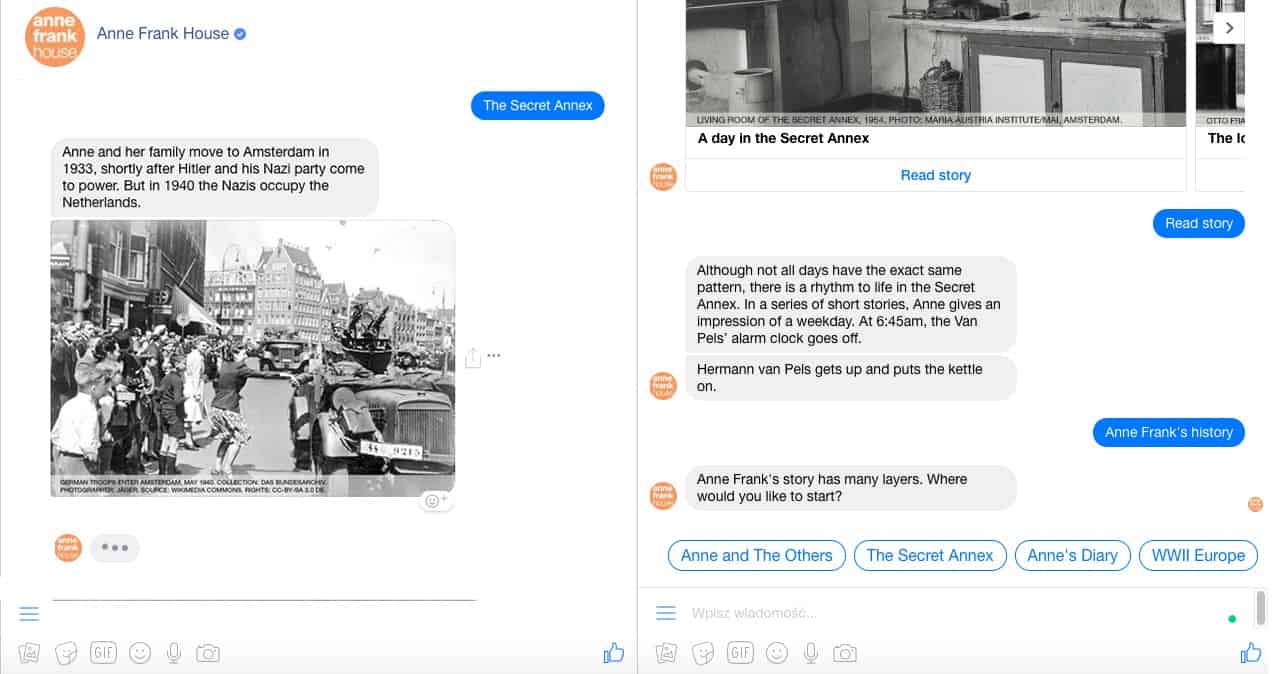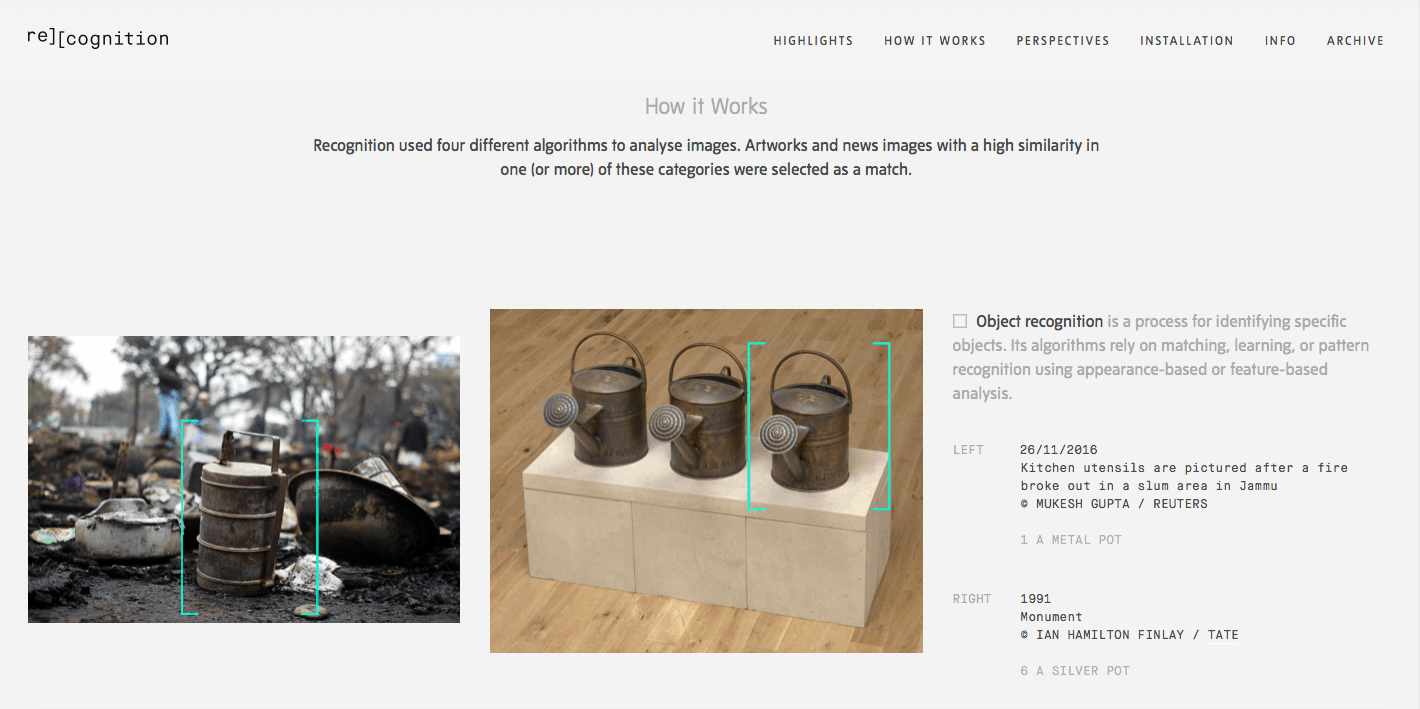Virtual assistants – Siri, Cortana, Alexa, chatbots, automatic hashtags on images and recommendation system algorithms- have already become a staple of our digitalised everyday lives. The highly advanced technical programming behind these gimmicks has infiltrated the art world, catching the attention of new media artists eager to experiment with AI, artbots and algorithms capable of generating works of art. Museums and galleries are exploring the potential of artificial intelligence with more or less satisfactory results.
Cultural institutions dabble in new technologies, such as informative VR or AR apps, to attract a wider audience and provide them with online access to an art collection. As it turns out, the cost of their design, operation and maintenance far exceeds the estimates of the museums, including institutions with substantial resources at their disposal. Launching a less sophisticated AI-based app, such as a chatbot, was proven to be far more cost-effective than commissioning a customised mobile app, which would still offer limited functionality and interactivity. Chatbots integrated into a social media platform, website and app allow institutions to reach more visitors. Fairly straightforward bot platforms for creating AI chatbots, such as Chatfuel and Mychat can even help streamline the adoption process.
Museums and cultural institutions of the GLAM sector have already embraced the digital revolution steered by AI development. They currently wrestle with the challenges posed by AI solutions regarding the technology’s optimisation and implementation with the view of increasing efficiency, audience engagement and automating certain processes.

Anne Frank Huose’s chatbot for Messenger
There’s more to AI than meets the eye: beyond chatbots
No wonder an exponential number of museums (and companies) ventures into AI through chatbots. These popular and intuitive apps thrive in customer service. Throughout the day, museum employees are often bombarded with burning questions fired at light-speed by foreign visitors from all parts of the world: where can I buy tickets? What’s in your art collection? What are your opening hours? Are your facilities wheelchair accessible? These are only several examples of the common inquires chatbots can help them handle in the most hectic situations. Chatbots synchronised with websites, Facebook profiles and apps can guide a visitor to all the information they might need. Additionally, they foster communication, give people immediate access to an organisation’s resources, encourage closer engagement on the part of the audience that forges and maintains a much closer relationship with the institution.
Another interesting use of chatbots boils down to so-called digital storytelling created by personifying historical, artistic and scientific figures of the past. Experiencing landmark events through the eyes of its real-life protagonists increases one’s feeling of empathy, as well as the ability to identify with their struggles, and therefore better understand the crux of culture and history. This phenomenon is illustrated perfectly by the Anne Frank House in Amsterdam that launched an outstanding bot back in 2017. The app tells the story of the Jewish girl’s life, for instance, by giving you a sneak peek into the entries she made in her own diary. The use of bots, however, may lead to less serious pursuits, such as sheer creative entertainment with the underlying purpose of promoting the museum collection, at the risk of turning the pieces into memes. San Francisco Museum of Modern Art decided to implement the tweeting artbot Send Me SFMOMA. Each text message triggers a query to the SFMOMA collection API, which then responds with the image of one of the 34.678 artworks that matches one’s initial request most accurately.

Web art project created by ‘DS’ Team during the HackArt / Hackathon MNW
This May’s HackArt / Hackathon held at the National Museum in Warsaw included a project of a personalised chatbot/virtual assistant for the Museum. It was inspired by the figure of Stańczyk [court jester] portrayed in Jan Matejko’s painting – one of the most famous works of art in Polish history. The chatbot is currently being introduced and shortly it will answer any questions about the Museum’s activities. Thus, it will make them more accessible and the direct interaction with visitors on Facebook will keep them engaged further.

The Voice of Art
Personalised guide
In an era when your typical audio tours fall short of the tech-savvy visitor, wishing to be fed pieces of information only they find interesting, more and more museums use AI chatbots as personalised guides. In 2017, IBM joined forces with the Pinacoteca of São Paulo in Brazil to create A Voz da Arte based on the IBM Watson platform in order to revive the plight of cultural institutions in Brazil. Studies showed that 72 per cent of the country’s citizens have never been to any museum because they view the experience as too overwhelming. Nowadays, upon entering the Pinacoteca, you receive a smartphone with a pre-installed app that allows you to talk to it, ask questions and therefore relate to an artwork. It seems worth mentioning that the partnership disrupts the monopoly of Western institutions that used to be at the forefront of this growing industry.

The Voice of Art
Access to information and archives
With museums and other cultural organisations looking to make it easier for audiences to interact with their expanding digital collections, AI-based search engines are no mean feat. These state-of-the-art archiving tools give visitors an unparalleled opportunity to access, navigate and delve deeper into virtual works of art, as well as those displayed in museums. The frontrunner of these innovations is Studio Rijksmuseum, an app which enables you to search its collection using tags, techniques and colour schemes. Another step forward in AI museum innovation is visualising the colossal image libraries processed by museums. The Norwegian National Museum’s collection can currently be viewed on Repcol, an experimental prototype which translates the museum’s archives into a three-dimensional model, a complex visual prism uncovering their inner structure at a meta level. The app allows users to perform not only detailed quantitative analysis of a given masterpiece but also distant reading, which might refute initial assumptions of a given work.
Analysis and classification
Art historians and curators also enjoy the benefits of Big Data analysis tools. Deep learning and machine vision classify hundreds of thousands of artworks in a split-second, carry out face-recognition algorithms on portraits and detect the mood of historical figures. This software can present the history of any painting in a much broader context leading to some fascinating scientific discoveries, or even assist art forgery specialists on a day to day basis due to pattern recognition. Research applications seem endless. A decade ago, Cornell University published the results of a joint scientific study conducted in collaboration with the Van Gogh Museum and Kröller-Müller Museum. The image processing tool was capable of confirming, more or less accurately, the authenticity of the impressionist master’s paintings by analysing his signature brushwork- a single gesture that can always be attributed to no other artist.
This year, the Copernicus Science Centre in Warsaw organises the Przemiany Festival that revolves around AI technology development. One of the displayed projects will be the web app hacked during HackArt MNW that uses Google Cloud Vision and Tensorflow Object Detection to customise and enhance one’s museum experience.

Recognition program
What does the future hold: AI as a curator?
There is a growing number of institutions which experiment with AI-curated exhibitions. Recognition – the AI-based curatorial project by Tate Britain as well as the title of a subsequent exhibition which opened in 2016, was a roaring global success. Over the course of three months, Recognition used algorithms to search through Tate’s vast collection database, and detect similarities between artworks and the wealth of news images provided by Reuters. Objects selected as a match gave rise to some of the most striking, humorous, thought-provoking and controversial juxtapositions that occasionally brought together artworks created centuries apart.
Exhibitions, arts and research projects utilising AI technology launching in every corner of the world herald the emergence of the brand-new art market. As it turns out, man-made tools harbour the potential to reveal a radical unprecedented aesthetic. We now stand on the verge of the next digital revolution. The only question is when or if AI would alter our perception of art, ushering the act of creation into a new era. For now, the question must remain unanswered. Still, AI provides us with tools that contribute significantly to the popularisation and deeper appreciation of cultural heritage.

Recognition program
Sylwia Żółkiewska – visual artist, designer, creative manager. She writes about how mobile applications and new technologies can be used creatively to promote knowledge and an appreciation of art, deepen users’ understanding of culture, facilitate education and streamline business activities. She also paints and creates digital art.
Ewa Drygalska – earned her Ph.D in Film Studies and Interdisciplinary Ph.D Program Society-Environment-Technology at Jagiellonian University in Krakow, Poland. She studied at University of California in Los Angeles and spent a significant amount of time at various American universities. Currently, she is responsible for content curation at the National Museum in Warsaw, engaging audiences and devising communication strategies. You can follow our work with winners of the hackathon at National Museum in Warsaw here.

Web art project created by ‘DS’ Team during the HackArt / Hackathon MNW
Written by Sylwia Żółkiewska, Ewa Drygalska









